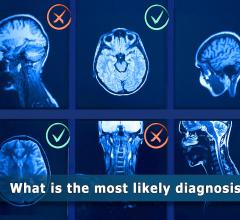
Greg Freiherr has reported on developments in radiology since 1983. He runs the consulting service, The Freiherr Group.
Ultrasound: Bone of contention
It’s old school that bone and ultrasound don’t mix. And it makes sense. Sonography is all about echoes, and what reflects sound better than bone? But modern ultrasound has entered a gray area, where such clear-cut distinctions no longer apply.
Nothing less than a complete revamping of the modality is needed to change the fact that ultrasound has a tough time penetrating bone. But clinicians are finding that visualizing the outer surface of bony structures and the tissue surrounding them may be enough.
Dr. Simon Ostlere, a consultant musculoskeletal radiologist at the Nuffield Orthopaedic Centre in Oxford, U.K., advocates the use of ultrasound to initially evaluate patients suspected of complications arising from total hip replacements and hip resurfacing. This is particularly so for patients who have metal-on-metal implants, because ultrasound is not prone to artifacts caused by metal, as are computed tomography (CT) and magnetic resonance imaging (MRI).
In the September issue of the American Journal of Roetgenology, Dr. Ostlere notes that “small lesions lying close to the prosthesis may be overlooked on MRI but are clearly visible on ultrasound.” (http://www.ajronline.org/content/197/3/558.abstract) Consequently, this simple, low-cost and extraordinarily safe modality – thanks to its lack of ionizing radiation – is the method of choice for initially evaluating orthopedic implants, he concludes.
While ultrasound cannot see what’s inside bone, it can contribute to orthopedics as part of a tag team. Earlier this year, at the annual meeting of the American Academy of Orthopaedic Surgeons, Dr. Michael Mott, an orthopaedic oncologist at Henry Ford, reported that fusing CT data with real-time ultrasound allows safe and precise needle biopsy of bone cancers.
Biopsy under ultrasound fusion was found to be 93 percent accurate, substantially better than the 90 percent accuracy achieved when biopsy was done under CT alone. But patient convenience and clinical productivity, rather than accuracy, will likely be the driving forces, if this pairing is adopted. It’s easier to schedule a biopsy for an ultrasound suite, Mott reported, than for a CT suite.
Convenience, simplicity and low cost will win converts to ultrasound in the years to come, as innovators come up with new ways to press into applications once beyond the traditional bounds. Orthopedics exemplifies how, when it comes to ultrasound, old school thinking no longer applies.


 March 19, 2025
March 19, 2025 








